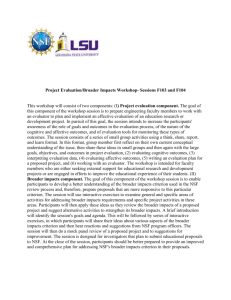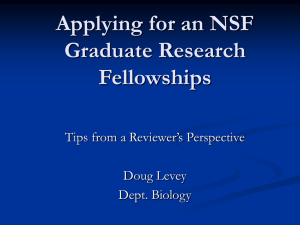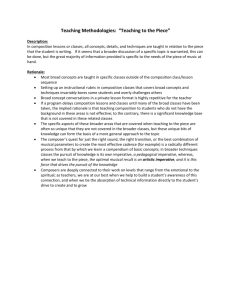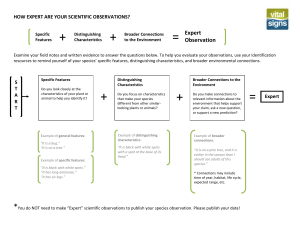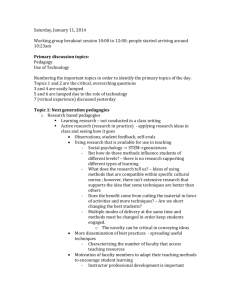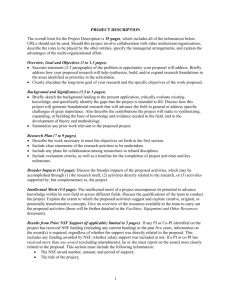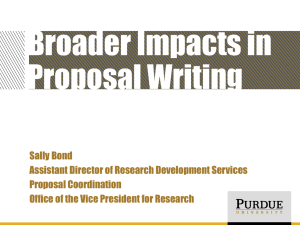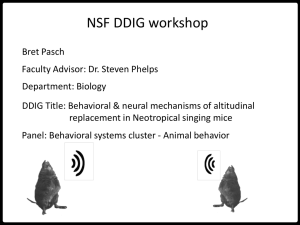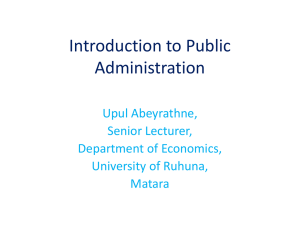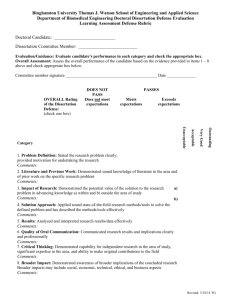Developing your Broader Impacts Project for the NSF
advertisement
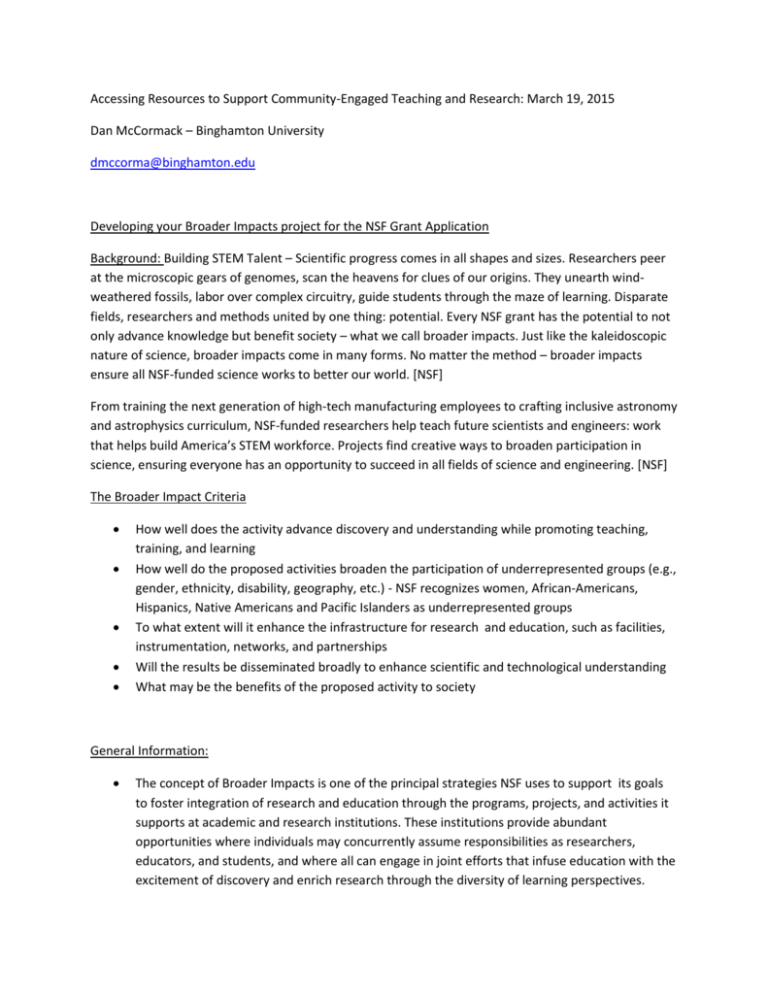
Accessing Resources to Support Community-Engaged Teaching and Research: March 19, 2015 Dan McCormack – Binghamton University dmccorma@binghamton.edu Developing your Broader Impacts project for the NSF Grant Application Background: Building STEM Talent – Scientific progress comes in all shapes and sizes. Researchers peer at the microscopic gears of genomes, scan the heavens for clues of our origins. They unearth windweathered fossils, labor over complex circuitry, guide students through the maze of learning. Disparate fields, researchers and methods united by one thing: potential. Every NSF grant has the potential to not only advance knowledge but benefit society – what we call broader impacts. Just like the kaleidoscopic nature of science, broader impacts come in many forms. No matter the method – broader impacts ensure all NSF-funded science works to better our world. [NSF] From training the next generation of high-tech manufacturing employees to crafting inclusive astronomy and astrophysics curriculum, NSF-funded researchers help teach future scientists and engineers: work that helps build America’s STEM workforce. Projects find creative ways to broaden participation in science, ensuring everyone has an opportunity to succeed in all fields of science and engineering. [NSF] The Broader Impact Criteria How well does the activity advance discovery and understanding while promoting teaching, training, and learning How well do the proposed activities broaden the participation of underrepresented groups (e.g., gender, ethnicity, disability, geography, etc.) - NSF recognizes women, African-Americans, Hispanics, Native Americans and Pacific Islanders as underrepresented groups To what extent will it enhance the infrastructure for research and education, such as facilities, instrumentation, networks, and partnerships Will the results be disseminated broadly to enhance scientific and technological understanding What may be the benefits of the proposed activity to society General Information: The concept of Broader Impacts is one of the principal strategies NSF uses to support its goals to foster integration of research and education through the programs, projects, and activities it supports at academic and research institutions. These institutions provide abundant opportunities where individuals may concurrently assume responsibilities as researchers, educators, and students, and where all can engage in joint efforts that infuse education with the excitement of discovery and enrich research through the diversity of learning perspectives. The Broader Impacts project should fit within the research – proposing something totally separate from the research doesn’t make sense – the Broader Impacts are supposed to be the broader Impacts of the proposed research - integrate your education and research activities whenever possible The term broader doesn’t necessarily mean non-scientists – sharing information outside your immediate field counts Events can sometimes be a good format for people who want to concentrate their efforts, as opposed to spreading activities out throughout the year – once you do an event, it is much easier to repeat it the next year Broader Impact activities ideally should be original and creative but yet based on sound rationale Provide sufficient detail – avoid leaving assumptions about your broader impacts plan to the reviewers Align your broader impacts project with the needs/strengths of your collaborators whenever possible Include meaningful engagement with underrepresented groups If appropriate, show how the work will be sustained Involve as many members of your research team as possible Questions you will have to address when developing a broader impacts plan Who/what is your audience; what level; what context What exists already; what is missing Who are your potential partners What are your strengths – the strengths of your research team; what are you passionate about What does your research lend itself to when thinking about broader impacts What , if, any constraint do you have: time, effort , logistical What resources will you need: budget; personnel – what resources do you already have – what resources/facilities do your potential partners have What do you intend to do Why do you want to do it How do you plan to do it – might need to include a timeline What do you want to accomplish – what are the goals for your the Broader Impacts project How will you know if you succeed; how will you measure success What benefits would accrue if the project is successful
